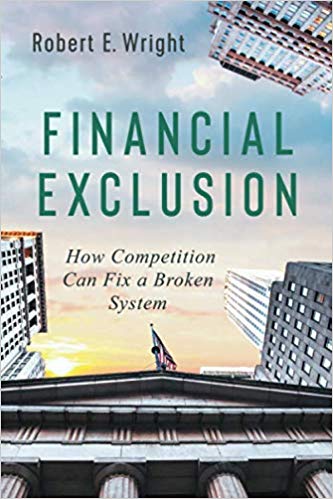Why Financial Inclusion Matters
A March 2019 econometric analysis of the Freedman’s Savings Bank by Luke Stein of Arizona State University and Constantine Yannelis of the University of Chicago (SSRN) validates one of the key points of my Financial Exclusion: How Competition Can Fix a Broken System (AIER 2019): financial inclusion matters.
The study carefully shows that the Freedman’s Savings and Trust Company, a mutual savings bank, helped former slaves to save enough money to put their children through school, establish businesses, and purchase real estate, thereby increasing both the quality of their lives and their usefulness to American society and the economy. That the Freedman’s established a network of branches over time and space allowed the econometricians to tease out the direction of causation.

Nineteenth-century America, after all, was the land of unit banks, of relatively small depository institutions that operated in a single location. Branching banks were few and, with only two exceptions before the Freedman’s, regulators allowed them only intrastate branches. Those two exceptions, the Bank of the United States (1791-1811) and the Bank of the United States (1816-1836), formed branches across state lines but they, and the men who ran them, were long gone by the Civil War.
Savings banks with branches were even rarer than branching commercial banks. No economic reason compelled the geographical diversification of savings banks because they invested mostly in government bonds and large mortgages, many placed by correspondents throughout the country.
In short, it was more than a little odd that the Freedman’s Bank was allowed to branch across state lines, especially given that its founders, mostly white abolitionists, had approximately zero banking experience. They soon lost control of the institution to men bent on extracting rents from its poor depositors. That is the sort of stuff that happens when political aspirations trump economic common sense and the government paternalistically creates an institution for, rather than of, a group of people perfectly capable of managing their own affairs if given the chance.
Perhaps the most pernicious aspect of the Freedman’s Bank was that its deposits carried an implicit federal government guarantee. After the bank failed in 1874, however, depositors suffered a major haircut. Not giving ex-slaves forty acres and mule was one thing, but it was quite another for the government to induce them, under the name and visage of the Great Emancipator, to put all their uninsured savings in an institution with a snowball’s chance in New Orleans of success!
People almost always know better than government what is best for them. Had abolitionists and Uncle Sam merely helped the freedpersons to establish their own banks, the disastrous destruction of the bulk of the savings of African-Americans, at a crucial period no less, would have been avoided and new forms of slavery that fed off poverty, like the convict labor system, attenuated. Sure, small, local institutions can fail too, but a few small shocks are always preferable to a big, inevitable one.
Let’s learn this lesson once and for all: to prosper, America does not need government banks or GSEs or anything other than peace, easy taxes, and a tolerable administration of justice. The last concept should include reasonable barriers to exit and entry into financial services. If members of some group feel excluded from the financial sector, regulators should allow them to form their own financial institutions and give it a go in the marketplace.
If the members were wrongly excluded from loans or insurance, their own institutions will thrive and our financial system will be larger, stronger, and more diverse than it otherwise would have been. If they were rightly excluded, as wingsuit jumpers with a 1 percent chance of dying during a jump are from life insurance, they will soon learn why as their losses mount.
Better that a few small institutions go under than regulators warp our entire financial system to satiate emotion-laden political slogans, like “widespread” home ownership, rather than rational economic goals.










